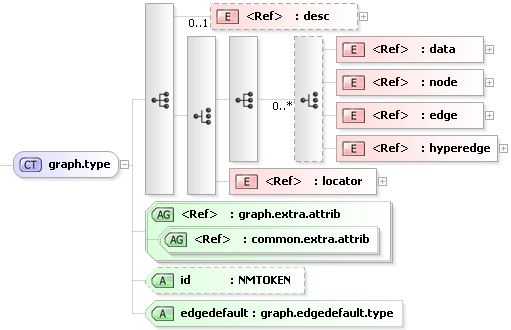<?xml version="1.0" encoding="utf-16"?>
<xs:complexType name="graph.type" final="#all">
<xs:annotation>
<xs:documentation source="http://graphml.graphdrawing.org/" xml:lang="en">
Complex type for the <graph> element.
</xs:documentation>
</xs:annotation>
<xs:sequence>
<xs:element ref="desc" minOccurs="0" />
<xs:choice>
<xs:sequence>
<xs:choice minOccurs="0" maxOccurs="unbounded">
<xs:element ref="data" />
<xs:element ref="node" />
<xs:element ref="edge" />
<xs:element ref="hyperedge" />
</xs:choice>
</xs:sequence>
<xs:element ref="locator" />
</xs:choice>
</xs:sequence>
<xs:attributeGroup ref="graph.extra.attrib">
<xs:annotation>
<xs:documentation source="http://graphml.graphdrawing.org/" xml:lang="en">
user defined extra attributes for <graph> elements.
</xs:documentation>
</xs:annotation>
</xs:attributeGroup>
<xs:attribute name="id" type="xs:NMTOKEN">
<xs:annotation>
<xs:documentation source="http://graphml.graphdrawing.org/" xml:lang="en">
identifies this graph .
</xs:documentation>
</xs:annotation>
</xs:attribute>
<xs:attribute name="edgedefault" type="graph.edgedefault.type" use="required">
<xs:annotation>
<xs:documentation source="http://graphml.graphdrawing.org/" xml:lang="en">
describes whether edges of this graph are considered
as directed or undirected per default (unless
specified by the attribute directed of <edge>).
</xs:documentation>
</xs:annotation>
</xs:attribute>
</xs:complexType>
|

